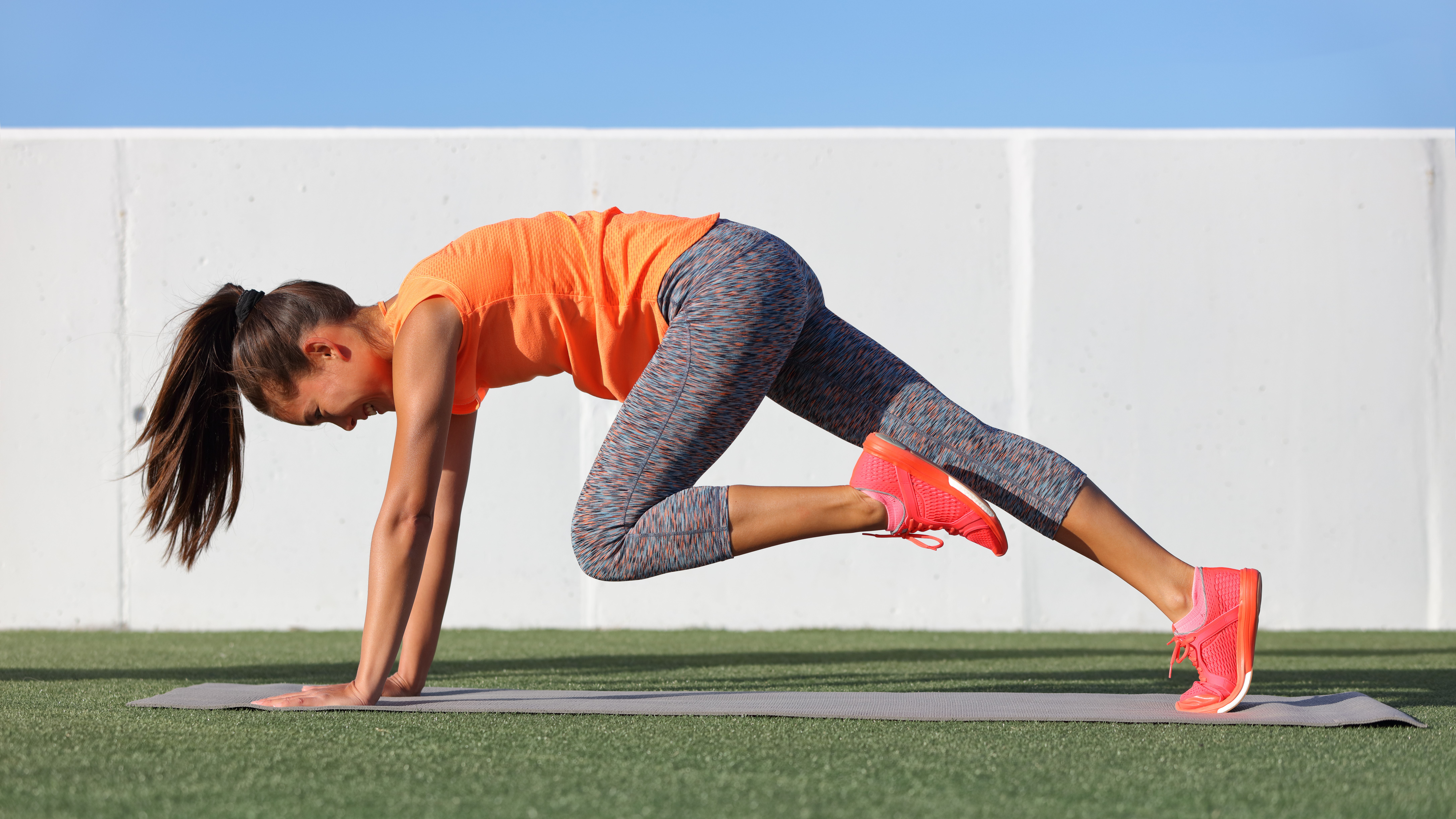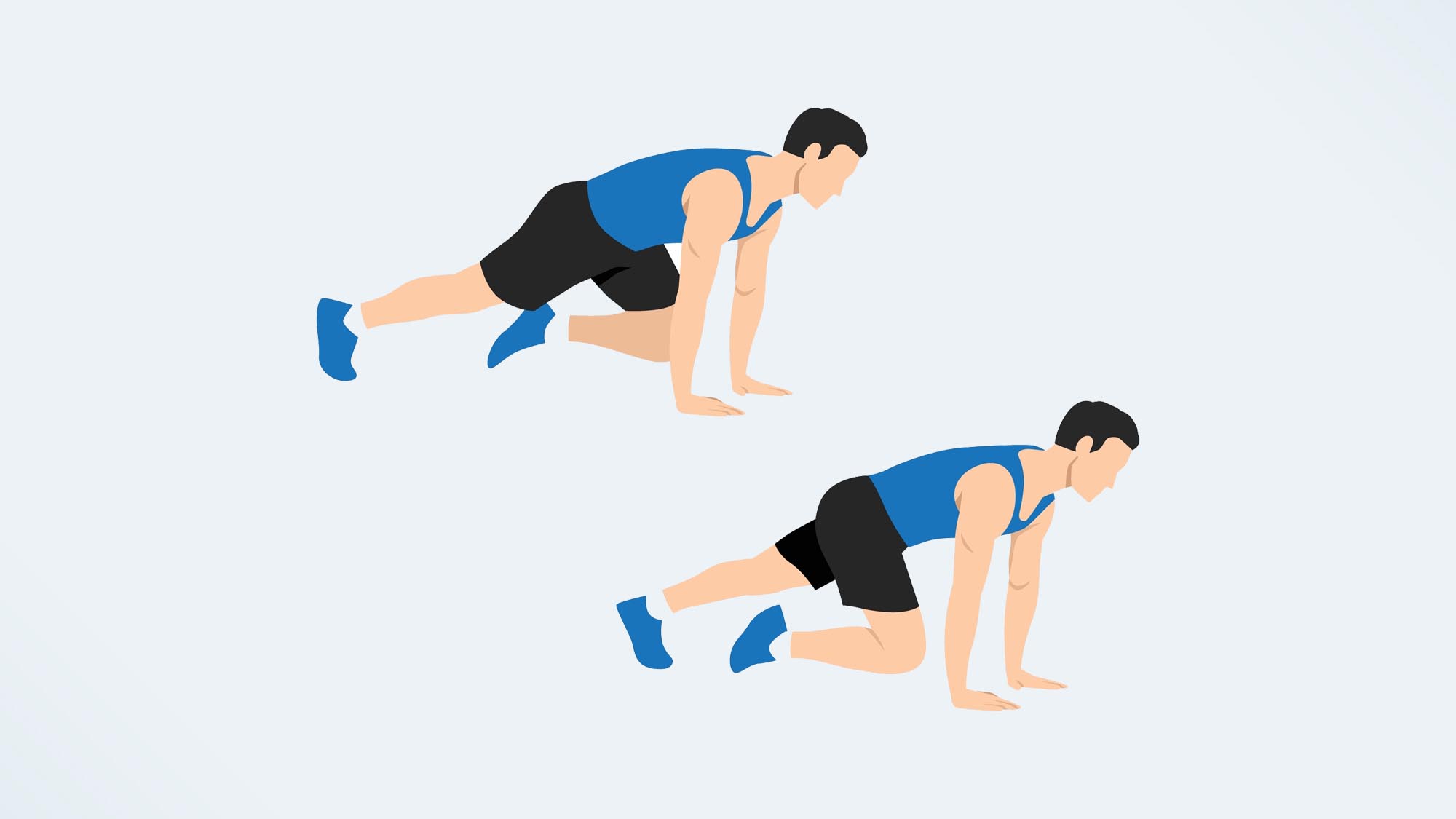
The plank crunch is exactly what it says on the tin — combining a plank and a crunch to really target the muscles in your midsection. Plank crunches work your core hard, so if you’re short on time and looking for a decent workout, it’s a good move to try. To find out more about this killer plank variation, I added it to my daily workout routine every day for a week. Read on to find out what happened to my core.
As a reminder, what works for me might not be right for you and your body. If you’re a complete beginner, you might want to start by building your strength by doing standard bodyweight planks. If you’re returning to exercise following an injury (particularly a lower back or shoulder injury), or a pregnancy, it’s a good idea to check with a health professional before adding planks to your routine, to ensure you’re not putting yourself at risk of an injury.
How to do a plank crunch

Let’s start with how to do a plank crunch with perfect form. You won’t need any additional equipment for this exercise, but it might be helpful to perform the plank on one of the best yoga mats to offer your wrists some protection.
- Start by getting into a plank position, with your wrists stacked underneath your shoulders, your palms pressed flat into the exercise mat, and your back straight.
- Engage your core, thinking about sucking your belly button into your spine.
- Lift one foot off the floor and bend at the knee, before driving the bent knee underneath your torso.
- Pause here, before reversing the move and extending your leg back out to a plank position.
- Repeat on the other side, and keep alternating sides until you have completed all your reps, or reached the allotted time.
- Do not let your hips drop from side to side as you drive your leg in — your torso and pelvis should remain stable throughout the exercise.
As a reminder, the key here is to move slowly and with control — the slower you move, the harder your muscles will be working to stabilize your body. Of course, if you’re using this as a warm-up, you might increase your speed to get your heart rate up.
I did 50 plank crunches a day for a week — here’s what happened
Ready to hear what happened when I did plank crunches every single day for a week? Read on.
My abs worked hard
Unlike a traditional crunch, which targets the six-pack muscles along the front of the body, the plank crunch works the entire midsection, including the deep core muscles and pelvic floor, as well as the internal and external obliques. I could really feel my core working hard in this move, especially on the first few days, where I held the ‘crunch’ part of the move for a few seconds before extending back to a high plank.
It’s easy to control how stable you are in the plank by altering your leg positioning. If you step your legs out to the edge of your yoga mat, you’ll be more stable than if your legs are hip-width apart.
This plank variation involves a compound movement as you’re working multiple muscle groups at the same time. I found my lower body and my upper body were all engaged in this move to hold my body stable.
It was easy to up the intensity
As with most of these week-long challenges, it didn’t take me long to get bored doing these plank crunches. To up the intensity, you can add a twist to the movement, which forces your obliques to work harder, but I also tried elevating my legs onto a step for an incline plank crunch. This made the move harder by making me less stable, so is definitely one to try if you’re looking for a progression.
It helped highlight imbalances
As you drive your knee to your chest in a plank crunch, your hip flexors, obliques, and rectus abdominal muscles are all working hard to stabilize your body. During the first few days of this challenge, I noticed that it was far easier to drive my knee to my chest on my right-hand side. While it’s perfectly normal to have a stronger side (normally your dominant side), over time, this can lead to muscle imbalances, so it’s a good idea to work on strengthening your weaker side.
I’ll be using this as part of my warm-up routine in the future
On days before heading out for a run, I opted to do faster reps to get my heart rate up and my muscles firing. As this is a compound move, it’s a good one to include in a warm-up, particularly before running, biking, or rowing, as it fires up your lower body and abs at the same time.
Of course, a week later, I didn’t notice any physical differences in my core — it takes a lot longer than seven days to build visible muscle. I did, however, notice that the move felt easier, and my core felt stronger in the mornings when I used this before lacing up my running shoes. If building visible abs is your goal, you’ll need to focus on your overall body fat percentage — here’s how to calculate your body fat percentage, and why it matters.







